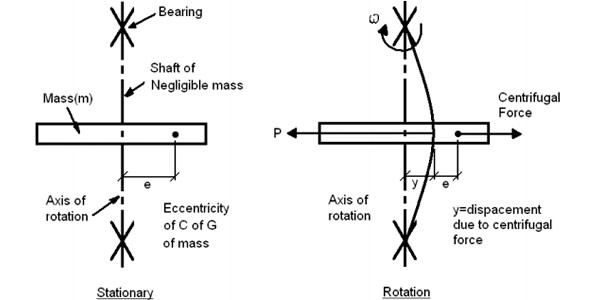The critical speed is the theoretical angular velocity which excites the natural frequency of a rotating object, such as a shaft. As the speed of rotation approaches the objects natural frequency, the object begins to resonate which dramatically increases systemic vibration. The resulting resonance occurs regardless of orientation.
When the rotational speed is equal to the numerical value of the natural vibration then that speed is called critical speed.
For a rotating shaft there is a speed at which, for any small initial deflection, the centrifugal force is equal to the elastic restoring force. At this point the deflection increases greatly and the shaft is said to "whirl". Below and above this speed this effect is very much reduced. This critical (whirling speed) is dependent on the shaft dimensions, the shaft material and the shaft loads.
All rotating shafts, even in the absence of external load, deflect during rotation. No shaft is perfectly straight and no shaft with attached masses is perfectly statically balanced such that the centre of gravity coincides with the axis of rotation.
At Morse Air Systems, we calculate the critical speed of our fan designs. We ensure the operation speed is at least 20 % either side of the calculated critical speed. This will result in the fan running well outside the "danger zone".

